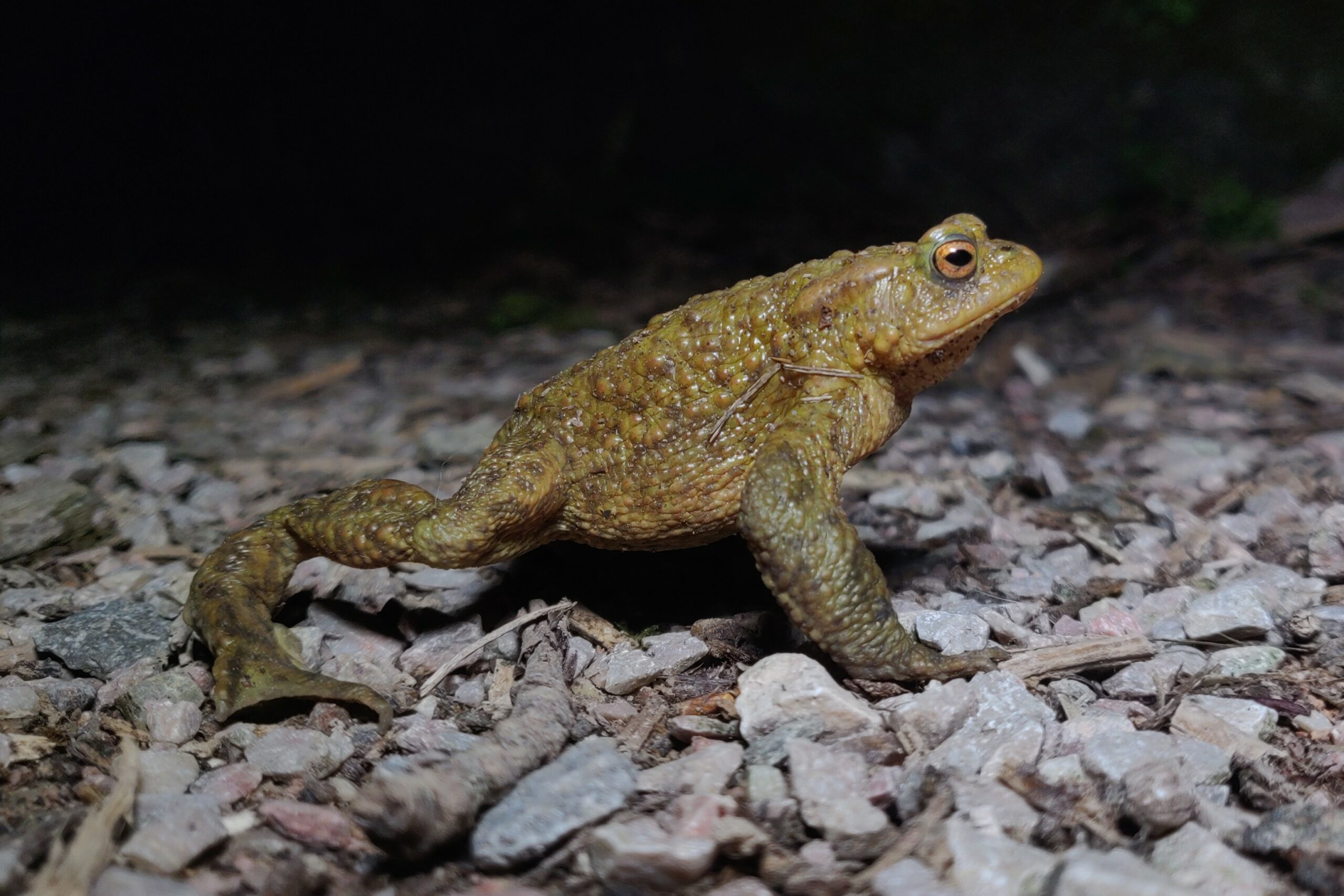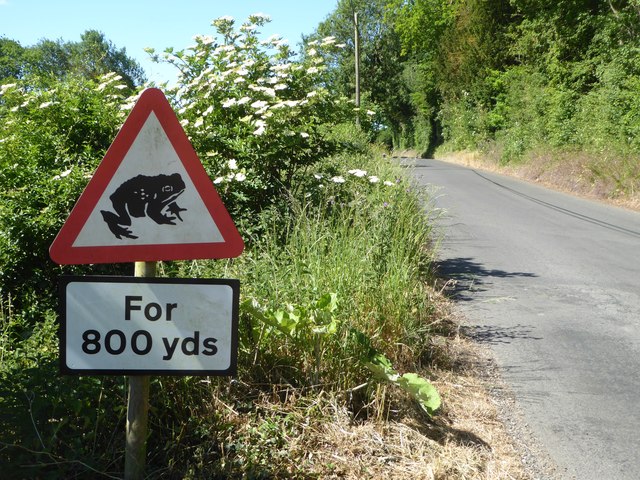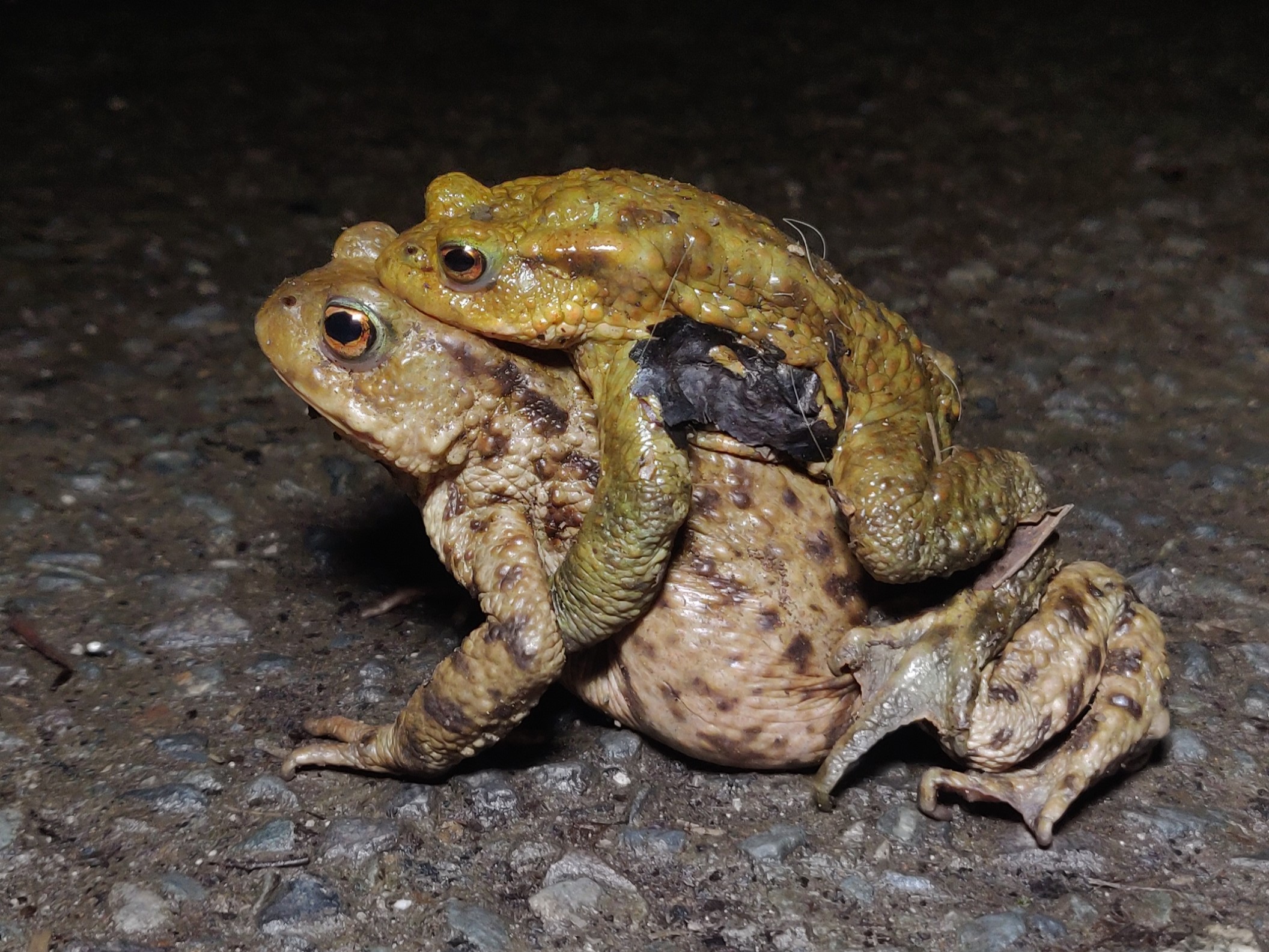It is in the earliest months of the year, when the weather turns milder and deeply saturating rains arrive, that adult toads, frogs and newts begin to emerge from their wintering hibernacula and make their long-standing annual journeys to the waterways in which they breed. It’s an ancient way of life for amphibians and a behaviour that pre-dates humankind by millennia.

Roads are a relatively new addition to the landscape by comparison. A blink of an eye in toad evolution. They frequently bisect the paths that amphibians must navigate in order to reach their ancestral ponds. Being relatively slow-moving, small, and cryptically coloured, amphibians are incredibly vulnerable on tarmac roads. As such, it is estimated that two tons of toads are killed on roads each year in the UK.
This February was one of the warmest and wettest on record in England, and it felt every bit of it. Despite the gloom of early darkness and torrential rain, I was thrilled to sign up and join an enthusiastic local volunteer group of Toad patrollers, deep in the Devon laneways, to learn what work is being done to mitigate our impact on the amphibians currently making these critical journeys.
The Toads on Roads project was spearheaded by the amphibian charity Froglife over twenty years ago. Volunteers that are involved in the project put in considerable effort each year to monitor known and established toad crossings around the country. These are the places where toads gather in their largest numbers and are at significant risk of being run over in their attempts to reach spawning ponds.
The group I joined have, for a number of years, been protecting an intersection where three roads meet beside a large pond. As we gather in high-vis vests at around half five in the evening, it’s already fully dark. We’re wearing latex-free gloves and bearing large white buckets. The pond is swelling up either side of the road, flooding the tree roots in a muddy soup. The rain falls intermittently and, sure enough, a proud collection of male toads is already eagerly lining the roads awaiting the females.

We walk along the lane counting the toads we find and placing markers near them that are more visible for passing cars than the toads themselves are. It’s not such a busy road, but it is narrow and steeply enclosed between old earthen hedgerows that cars and tractors have clipped away over time, resulting in an overhang that the toads are incapable of climbing. Often, they become trapped along the lane. Where we find them in a predicament, we watch to observe the direction of their travel, and if the cars come, we gently lift the toads off the tarmac and place them in the verge where they appear to be headed.
A few drivers who come by slow down and ask what we’re doing. Many seem intrigued by the response, often vowing to take care as they go on. I’m told this is an improvement. As awareness of toad crossings and the work being done to monitor them increases, people are more understanding, though I’m assured there’s still animosity from some drivers who feel inconvenienced.
During some of the evenings on the patrol we encountered beastly weather; driving rain and flooded roads; and I marvelled at the dedication of the volunteers and their care for the amphibians crossing the roads. I learned that more people are approaching Froglife to get involved and that, due to increased awareness and publicity, the plight of toads is reaching more and more would-be patrollers. There have also been successful cases of temporary road closures to divert traffic during the heights of toad migration in the UK this year.

It’s a complex web of challenges that contribute to amphibian population declines – not just nationally but globally. Land-use intensification threatens our waterways with myriad pollutants and our roads and construction projects fragment vital habitats or obliterate them entirely. It’s heartening that awareness is building. It has been such an inspiration to me to learn there’s a network of enthusiastic and caring volunteers out there in the winter nights, working at limiting the damage to amphibian populations, championing these remarkable and charismatic animals, and building hopeful connections in local communities while doing so.
If you feel call to get involved, visit the Froglife website where you can learn more about local toad crossings. There’s also abundant information on ways that you can make any local green spaces or gardens more amphibian friendly, such as making ponds, allowing wilder patches and encouraging greater invertebrate diversity.
Read our two-part Gardening for Wildlife blog for more information.






